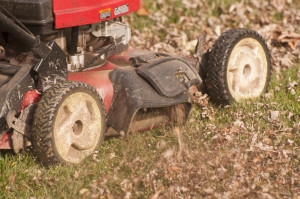Latest Posts
- Have a purpose when backyardingAugust 5 2021
- Study: Time outside alters our microbiomeAugust 4 2021
- Happy National Mutt Day from Mo-MoJuly 27 2021
- New home? Avoid these common mistakes in your yard.July 26 2021
- Infographic: Plan a backyard staycation this summerJuly 22 2021
Categories
Archive
September 20th
Do this fall yard work to reap springtime benefits

Don’t believe your family yards needs attention in the fall? Autumn is no time to ignore your lawn and landscape. What you do now will determine the quality of your family yard next spring and summer.
Beyond bulb planting, fall is the time of year for mowing, mulching, aerating, trimming and patching your lawn. After all, TurfMutt reminds, your living landscape does a lot for you! It produces oxygen, reduces the urban heat island effect, filters and captures runoff, improves air quality, controls erosion, absorbs carbon dioxide, and supports biodiversity. You benefit when your yard is in top shape.
Here are TurfMutt’s tips to make sure your yard is ready for relaxing and fun outdoor activities next year.
Keep mowing. Grass still needs regular care to stay healthy. Grass that is too high may attract lawn-damaging field mice. Shorter grass is more resistant to diseases and traps fewer falling leaves. Cutting the grass low allows more sun to reach the crown of the grass, so less leaf will turn brown in the winter. However, cutting off too much at one time can be damaging, so never trim more than a third of the grass blades off in a single cutting. Put mower blades on the lowest settings for the last two cuts of the season.
Aerate your lawn. Compressed soil hurts grass health. Aerating punches holes into the soil and lets oxygen, water and nutrients into a lawn. Use a walk-behind aerator or get an attachment to pull behind a riding mower.
Mulch your leaves. Many mowers can mulch leaves with an attachment. Since mulching with a mower can mix grass clippings with leaf particles, these nitrogen-rich grass particles and carbon-rich leaf particles will compost more quickly. Together, they return nutrients to the soil.
Trim and shore up trees and bushes. Use trimmers, chainsaws or pole pruners to cut back trees, shrubs and plants. Make sure branches are safely trimmed back from overhead lines, and not in danger of falling on a structure in winter weather. You may need to tie or brace limbs of upright evergreens or plants to prevent them from breaking in high winds or snow. Call a professional arborist for big trees or hard to reach spots.
Repair bald spots. Fall is a great time to patch bald or thin spots in a lawn. The easiest way to do this is with an all-in-one lawn repair mixture (found at most garden shops and home centers). Use a garden rake or de-thatcher to scratch loose the soil on the spot.
Want to learn more about living landscapes, why they are important, and how to care for them? Go to www.savelivinglandscapes.com.





